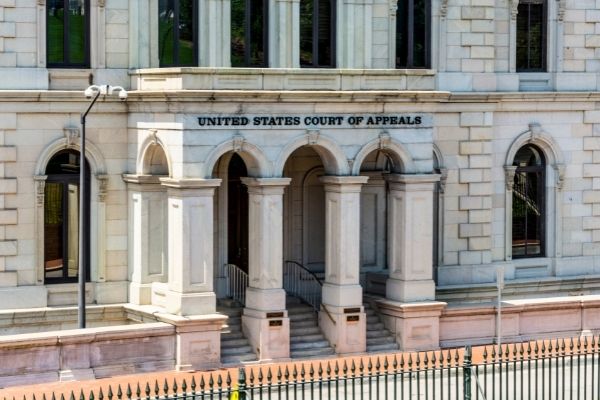Demystifying the Refine of Federal Appeals: What You Required to Know
Navigating the intricate world of government appeals can typically feel like passing through undiscovered waters for those strange with the process. Recognizing the subtleties of appellate court jurisdiction, the complexities of filing a notice of charm, offering an engaging quick, and making a persuasive dental debate are vital components that can substantially influence the end result of an instance. By deciphering the layers of complexity surrounding federal charms, people can get a clearer understanding right into the devices that regulate this critical point of the legal system.
Recognizing Federal Appeals Process
Delving into the intricate realm of the government appeals procedure reveals a systematic and organized trip with the judicial system - utah federal crime appeals lawyers. Federal appeals act as an essential device for examining decisions made by lower courts. Understanding this procedure is important for any person associated with legal proceedings at the government level
The procedure generally begins with an event disappointed with a reduced court's ruling filing a notice of appeal. This activates a testimonial by a higher court, where a panel of courts examines the legal disagreements offered by both events. Briefs outlining the legal reasoning behind each event's position are submitted, and dental arguments may be heard to make clear complex concerns.
The appellate court's decision is based on a complete exam of the lower court's proceedings and the arguments offered. As soon as the appellate court gets to a decision, it can affirm, turn around, remand, or change the reduced court's judgment, giving quality and finality to the legal dispute.
Appellate Court Jurisdiction Clarified

Appellate courts have territory over certain kinds of cases, usually those involving lawful mistakes, step-by-step issues, or inquiries of legislation instead of accurate disagreements. The territory of appellate courts is normally described in statutes and regulations that govern the court system. Understanding appellate court territory is essential for parties associated with the allures process as it establishes whether a situation is qualified for evaluation and the extent to which the appellate court can intervene in the lower court's decision.
Filing a Notice of Appeal
The first action in commencing the government allures procedure involves submitting a Notification of Charm with the ideal appellate court. best massachusetts federal appeals attorneys. This critical file officially alerts the court and the other parties associated with the instance that the appealing celebration plans to look for an evaluation of the reduced court's choice. Filing a Notice of Charm is a strict procedural need that establishes the appellate process moving
When preparing the Notice of Allure, it is essential to ensure compliance with the details regulations and standards of the appropriate appellate court. The file should generally include information such as the instance name, the reduced court's name, the date of the judgment being appealed, and a concise statement indicating the grounds for the appeal.
When filing a Notification of Allure,Timeliness is of the significance. Missing next page the target date for submitting this record can lead to the charm being dismissed, emphasizing the value of exact and prompt initiation of the charms process. It is suggested to seek legal advice to browse the intricacies of filing a Notification of Charm properly.
Rundown and Dental Debate
In the appellate process, providing written briefs and engaging in oral disagreements play crucial functions in promoting for the appealing party's setting before the appellate court. Briefs are comprehensive legal papers that describe the parties' debates, lawful authorities, and analysis supporting their positions. These created entries offer the court with a comprehensive understanding of the truths of the case, the pertinent legislation, and why the appealing party thinks the lower court's decision need to be rescinded.
Adhering to the entry and evaluation of the briefs, dental disagreements offer the parties an opportunity to further clarify their positions, address any questions the appellate judges may have, and emphasize bottom lines from their composed briefs. Dental arguments are a possibility for the lawyers to convince the courts via verbal advocacy and responses to inquiries from the bench.

Getting the Appellate Court Decision

Verdict
Understanding the appellate court territory, submitting a notice of allure, preparing briefs, and presenting oral arguments are all important elements of this process. Eventually, receiving the appellate court choice can offer quality and resolution to lawful disagreements.
As we proceed from understanding the federal appeals procedure to dissecting the details of appellate court jurisdiction, a basic aspect comes to light pertaining to the authority and limits of these greater courts in the lawful landscape. Appellate court territory refers to the range of cases that a certain appellate court has the power to choose and assess upon. Unlike trial courts that hear cases for the first time, appellate courts are limited to assessing decisions made by reduced courts. Understanding appellate court jurisdiction is vital for parties included in the allures process as it figures out whether a case is eligible for testimonial and the degree to which the appellate court can intervene in the lower court's choice.
Whether the appellate court attests, turns around, or remands the lower court's decision, recognizing the effects of the ruling is important for all events involved in the appellate process.
Comments on “Experienced Federal Crime Attorney: Professional Defense in Federal Crime Cases”